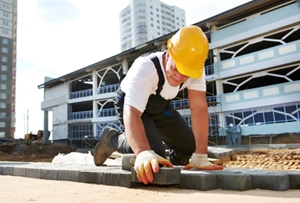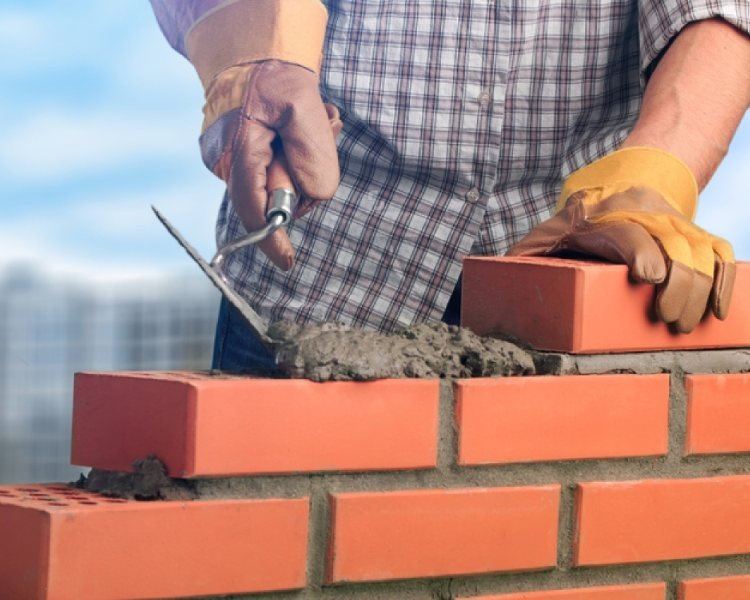Unlocking the Secrets of Lasting Stonework Construction Practices for Eco-Friendly Buildings
In the realm of modern construction, the pursuit of sustainable techniques has actually come to be critical. Among the myriad methods to environment-friendly structure, lasting stonework building attracts attention as a time-tested and resilient method that holds a wealth of untapped possibility. From the selection of materials to innovative building and construction strategies, the keys to attaining sustainability within masonry building and construction are complex and intriguing. By checking out the benefits, products, techniques, and future fads of sustainable stonework, a deeper understanding of just how these practices can form the future of environmentally friendly structures emerges.
Advantages of Lasting Stonework Building And Construction
Embracing sustainable masonry building methods not just minimizes ecological influence but also provides long-term economic benefits to home builders and areas. By making use of products like recycled blocks, blocks, and stones, contractors can substantially reduce the carbon impact of their jobs while promoting resource efficiency. Additionally, lasting stonework building techniques, such as correct insulation and thermal mass residential properties, can enhance power effectiveness within structures, causing decreased functional expenses over time.
In addition, the longevity and durability of masonry frameworks contribute to lasting economic advantages. Buildings created utilizing sustainable stonework practices usually need much less maintenance and fixing, equating to cost savings for builders and homeowner. The longevity of stonework materials additionally guarantees that frameworks remain steady and secure, decreasing the demand for frequent improvements or replacements.
Eco-Friendly Masonry Products
Making use of eco-friendly masonry products is a crucial action in the direction of improving the sustainability of construction practices and minimizing ecological influence while maximizing long-term financial advantages. Sustainable stonework products are sourced, created, and utilized in a manner that lowers total environmental influence. Sustainable concrete blocks include recycled aggregates and may include enhanced insulation homes, contributing to power effectiveness in buildings.
In addition, natural materials like adobe, rammed planet, and straw bales give exceptional thermal mass homes, reducing the demand for heating and cooling down energy. These products are commonly locally readily available, promoting local economic climates and reducing transportation-related carbon discharges. By selecting eco-friendly stonework materials, building and construction jobs can considerably lower their environmental impact and add to the production of healthier, extra sustainable constructed environments.
Energy-Efficient Stonework Methods
Energy performance plays an important duty in boosting the sustainability of stonework construction practices. One crucial energy-efficient stonework technique is the use of thermal mass, which involves integrating dense products like concrete or block into the building's structure to soak up and save large patio pavers warmth.

Technologies in Sustainable Masonry
Recent innovations in sustainable stonework practices have actually caused cutting-edge methods that are improving the construction sector. One such development is the growth of self-healing concrete, which uses microorganisms embedded within the concrete to heal splits autonomously. This development not just decreases upkeep costs however additionally improves the durability of masonry frameworks, adding to their sustainability.
Another remarkable innovation is making use of recycled accumulations in masonry building - masonry he has a good point contractor. By including materials such as crushed ceramic waste or recycled glass right into concrete blends, contractors can minimize the ecological impact of building jobs while keeping structural stability. This method not just draws away waste from landfills however additionally preserves natural resources, making it an essential innovation in sustainable masonry construction
In addition, the integration of digital style devices, such as Building Info Modeling (BIM), is revolutionizing the method stonework frameworks are planned and built. BIM permits more accurate estimations, reduced material wastefulness, and improved energy efficiency, ultimately resulting in even more lasting structure techniques. These technologies collectively signify a promising future for sustainable masonry construction in the age of green structures.
Future Trends in Stonework Sustainability
With the innovative strides made in sustainable masonry practices, the future patterns in stonework sustainability are positioned to further transform the building and construction industry. Among the key patterns shaping the future of stonework sustainability is the raised integration of innovation. Advancements such as Building Info Modeling (BIM) and online truth simulations are being made use of to maximize stonework building and construction processes, resulting in decreased material waste and boosted power effectiveness in buildings.
In addition, the growth of unique lasting products is established to play a considerable role in boosting the eco-friendliness of stonework construction. masonry contractor. Innovations like self-healing concrete, recycled accumulations, and bio-based binders are getting traction for their capacity to decrease environmental effect while maintaining structural honesty

Conclusion
Finally, lasting stonework construction herringbone stamped concrete practices provide many advantages for green buildings. By utilizing environmentally friendly products and energy-efficient strategies, stonework can contribute to a more sustainable developed setting. Developments in lasting stonework are continuously being established to even more improve the environmental efficiency of structures. Looking towards the future, the pattern of masonry sustainability is anticipated to grow, bring about more ecologically friendly and energy-efficient building and construction techniques in the years to find.